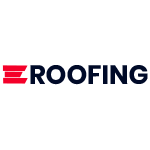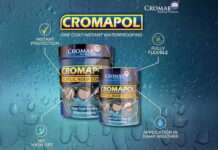A shed roof doesn’t have to use shed felt. If you’re looking for an alternative shed roof solution, Corrapol corrugated sheeting is another excellent option. Each of the four main Corrapol types we sell here at Eroofing is made of a different material offering different attributes. Since they are made by Clear Amber Group, they also come with a wide assortment of ancillary products that help them function to the best of their ability.
For instance, Corrapol-BT is a cost-effective corrugated sheet made of bitumen-impregnated board, providing a colourful appearance. There is also Corrapol-PVC, which is exceptionally easy to install for amateurs because of how easy it is to cut. Corrapol Stormroof boasts premium durability, while Corrapol-GRP offers a middle-ground of all attributes.
Remember that Stormroof and Corrapol-PVC are both transparent, so people may be able to see into your shed. Also, you should use High Profile Stormroof sheets so the flashing fits properly.
You will need:
- Safety gloves and safety goggles
- Corrapol sheeting
- Two sides worth of Rock n’ Lock Gable Flashing
- Corrapol High Profile Eaves Fillers
- Corrapol Super Ridge Bar Set and two Super Ridge Endcaps (if the roof is double-sided)
- Corrapol Superior Flexible Fixings
- Power Drill with drill bit that is suited for aluminium and Pozidriv bit
- Circular Saw with blade ideal for aluminium
- Tape Measure
- Protractor
- Roof and Gutter Sealant with sealant gun
Note that if you are doing a shed roof on a skillion (one sided roof) shed you will not need a Super Ridge. If your roof adjoins a house wall you should only need one Gable Flashing, and use Rock n’ Lock Wall flashing and Securbond Flashing Tape for where the roof meets the house wall.
Also, you should make sure when you are ordering your roof sheets and flashing to cut to size that they should overhang the edges of the shed roof by at least 70mm. Use your protractor to measure the pitch of your roof. If it is lower than 10 degrees, you should overlap by at least two peaks horizontally for every sheet adjoining another, and by 320 mm vertically. If it is between 10 and 15 degrees, it’s one peak and 220 mm vertically, and finally if it’s higher than 15 degrees it’s one peak and 180mm vertical overlap.
Preparation for installing Corrugated Sheeting for a Shed Roof
First, remove any remains of the roof the shed roof previously had. Then begin carefully cutting the sheets to size using a circular saw. Always cut against the profile, never along it; when it’s time to place the sheets, where it would otherwise stick out at the sides, increase the number of peaks overlapped to bring it back to size. Then mitre cut your gable flashing so it will meet perfectly at the ridge. You will also need to drill holes in them every 250mm for fixings. If you are using wall flashing then do both tasks with that as well.
Installing your sheets and flashing
Install Foam Eaves Fillers where every rafter is or where they would be on a planked roof. Then place the first sheet over it, and the gable flashing on one side over it. Drill fixings through the holes in the flashing, then the middle of the peaks every two peaks through the sheets into the foam filler. Adhere to the overlap guidelines mentioned previously.
On a skillion roof when you reach the other side install the gable or wall flashing and then you’re done. Remember to put the fixings through the previously drilled holes. Use securbond to finish off the wall flashing.
Installing your Ridge and sealing your roof
On a double sided roof, once you have done both sides independently, cut your Super Ridge to order, making sure that the endcaps will overlap the flashing on the gable sides by 10mm. At the wall end the Endcap might need to be cut to make sure it can fit. Use Securbond here to totally seal it off.
Finish off the ridge, drill the holes every 250mm in the super ridge and install it like you did the gable flashing, pushing in the foam to make sure it fits the profile of the sheeting exactly. Put in your fixings.
Finally, you will need to seal off the gaps. Use roof and gutter sealant on the mitre joint and where the endcap meets the super ridge. You have finally installed your roof.







